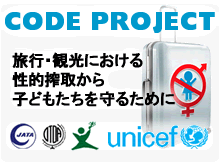NPA to launch study on child selfie porn
The National Police Agency intends to conduct research on 10,000 households with mainly junior and senior high school students as the selfies (see below) of people in this age group are being used as online child pornography in a rapidly increasing number of cases, sources said.
There has been a large number of cases in which minors were deceived by persons they came into contact with through social media websites such as Twitter or Facebook, and were forced to send photos they took of themselves via free software applications such as LINE.
By conducting the research, the NPA aims to understand how social media sites are used and take measures to prevent such cases, the sources said.
The research is planned to be conducted in the next fiscal year, covering children and their guardians in 10,000 households. The NPA will check such details as whether the minors own smartphones; why and how often they use social media sites; and whether the guardians understand how their children use social media sites.
Separately, the NPA will also conduct interviews on about 500 underage victims to analyze how they communicated online before sending their selfies and how they actually felt while doing so.
According to the NPA, the number of children under 18 who were victimized by child pornography stood at 905, a record high, last year. In a number of cases, images of children’s naked bodies were photographed. The number jumped about seven-fold from that in 2000, when the collection of such data began.
Of the victims, 376, or 41.5 percent, were victims in cases involving self-shot pornography. They were forced to take photos of their naked bodies or of themselves wearing only underwear, and then to transmit the graphic data.
Of the 376 victims, 93.6 percent were junior and senior high school students. Most of them transmitted the images of their naked or scantily clad bodies to persons with whom they became acquainted via social media sites.
In some cases, victims carelessly accepted the perpetrators’ request to send self-shot pornography after being told, “I love you,” or “I want to know about you.”
In one case, the perpetrator pretended to be a junior high school girl worrying about her physical development and asked the victim to send photos, saying, “I want to compare my body to yours.”
In another case, the perpetrator told a senior high school girl she would be able to receive an event ticket if she sent a photo of her naked body while chatting on an online bulletin board.
Last month, the Osaka prefectural police arrested a 47-year-old truck driver on suspicion that he forced an elementary school girl to send pornographic images of herself via LINE by sending her the message, “If you follow my instructions, I’ll give you stamps [graphic items in LINE].”
In many cases, transmitted images of child pornography were posted on the internet without the victims’ consent.
In one such case, an image that was downloaded after being illicitly placed online has continued to be disseminated for more than 10 years.
An NPA official said, “We will carefully analyze the impact of family circumstances and other background factors that could cause [children] to be victimized, and take measures to effectively address the issue.”
Leaked images impossible to recall
By Toshiyuki Yoshida / Yomiuri Shimbun Staff Writer
Child pornography is considered to have serious consequences as it is almost impossible to retract pornographic images once they are uploaded to the internet.
Such images are copied onto online bulletin boards, SNS sites and other online media, causing victims to suffer long-term psychological pain. Even if the victim tries to delete them, there are few means available to do so.
In many cases, self-shot child pornography was sent after victims were deceived by flattering words, or acted on a desire to receive money. However, the damage is too serious to simply condemn the victims for having put themselves at risk.
Because smartphone use is becoming more common among elementary school students, it is necessary to take measures as soon as possible to grasp the reality of the situation.
■ Selfies
Selfies are photos people take of themselves using smartphones or other devices. Smartphone users take selfies by directing the camera lens at themselves, and can transmit the images instantly. With the spread of smartphones, taking selfies has become popular. The act of forcing children under 18 to take pornographic photos of themselves constitutes the production of child pornography under the Law on Regulation and Punishment of Acts Relating to Child Prostitution and Child Pornography, and the Protection of Children. Violators face up to three years in prison or up to a ¥3 million fine.



